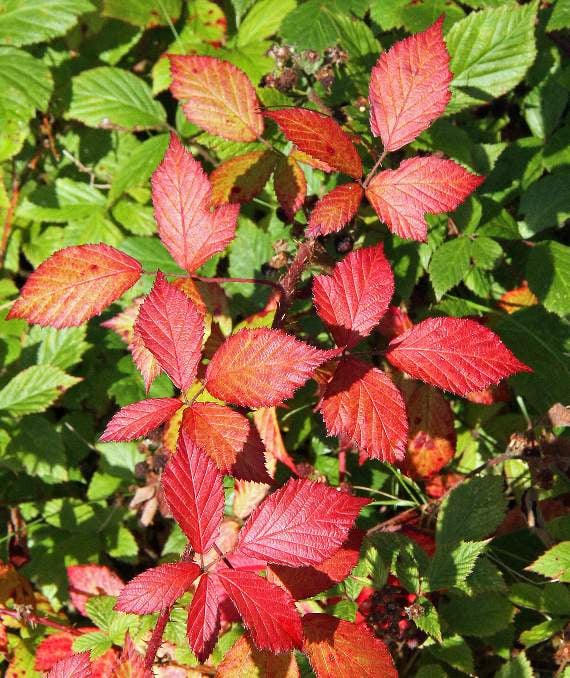Leaves to eat, leaves that look like bellybuttons and leaves for medicinal uses all feature in this week’s Nature Watch walk on the edge of Liskeard, thanks to photographer Ray Roberts...
I parked near Morrison’s store and walked along Golden Bank and just like last year there were lots of lesser celandines – Ranunculus ficaria – out in bloom along the bottom of the hedge. An appropriate place for them to grow as their flowers are golden yellow.
Turning right, I went up the lane that runs along to the new houses on Liskerret Road and walked past loads of yellow archangel plants out in leaf with white patterns on them. The yellow flowers will come in March and continue until October and their far-creeping roots that spread easily, will soon cover a large piece of ground along the bottom of hedgerows and on banks.
Most of the bramble leaves have turned red now and I came across a geranium leaf that was copying the brambles. I know the leaves of the herb robert turn red, but this is the first time I have seen a coloured leaf on one of the larger geranium species.
On the hedgerow, growing between the stones were lots of navelwort – Umbilicus rupestris. These plants favour stony banks and walls and at this time of the year they are all showing their round leaves that have a depressed centre resembling a bellybutton, hence the name. Usually, their whitish flowers that grow on a tall stem appear in May, but one of the plants was impatient and was already in bloom.
Also growing on the hedge were large groups of common sorrel – Rumex acetosa – leaves which, according to Roger Phillips excellent book Wild Food, is one of the most widely collected wild plants, being used to make soups and a tasty addition to salads. During the forties we would pick these sour, acidic leaves and chew them whilst on our nature walks and also on our journeys to and from school. Their taste is what gave them the name, sour sab.
The leaves can also be added to sandwiches and when I worked as a builder and the job took me into the countryside, I would always look around to find a sorrel plant so I could add a couple of leaves to my cheese sandwich at lunchtime. I used to do the same with wood sorrel – Oxalis acetosella - leaves that have a milder taste than common species.
I also found a betony plant – Stachys officinalis – growing among the brambles, that still had some red flowers on it. Betony is a member of the Mint family and is a relation to the hedge and marsh woundworts which were once used, as their names suggest, to staunch bleeding. The plants grow on roadside banks and on rocky ground.
A short, leafless hawthorn tree was growing in what used to be an orchard and on one of its branches there was some yellow brain fungus – Tremella mesenterica – that was a very pretty sight. Usually, this fungus grows on dead deciduous trees and can be seen throughout the year.
When I arrived home, there were a couple of male chaffinches feeding on grains of corn that I threw on the garden. Male chaffinches with their copper-coloured breasts, are as beautiful as the goldfinches that come into our garden.




